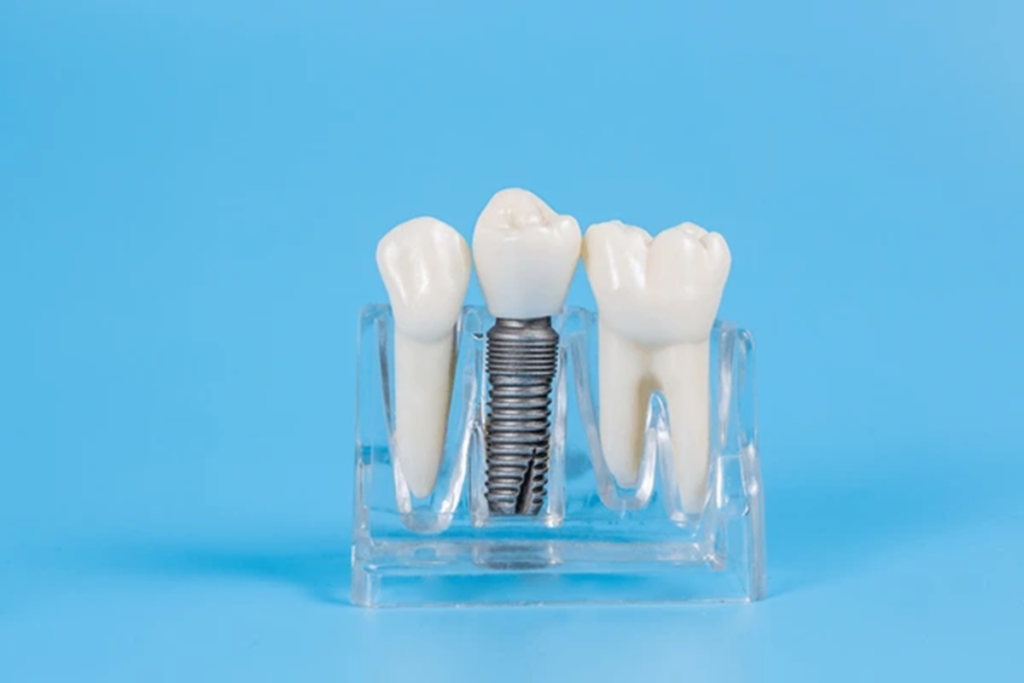The most difficult decision many dentists have to make is selecting dental restorative material. This invariably leaves dentists looking for alternatives, and this guide makes that search simpler by proposing 8 basic materials that can take one’s practice to a whole new level. Such materials should be needed for more than just their optimal functionality; these are essential in providing consistent patient care and patient satisfaction.
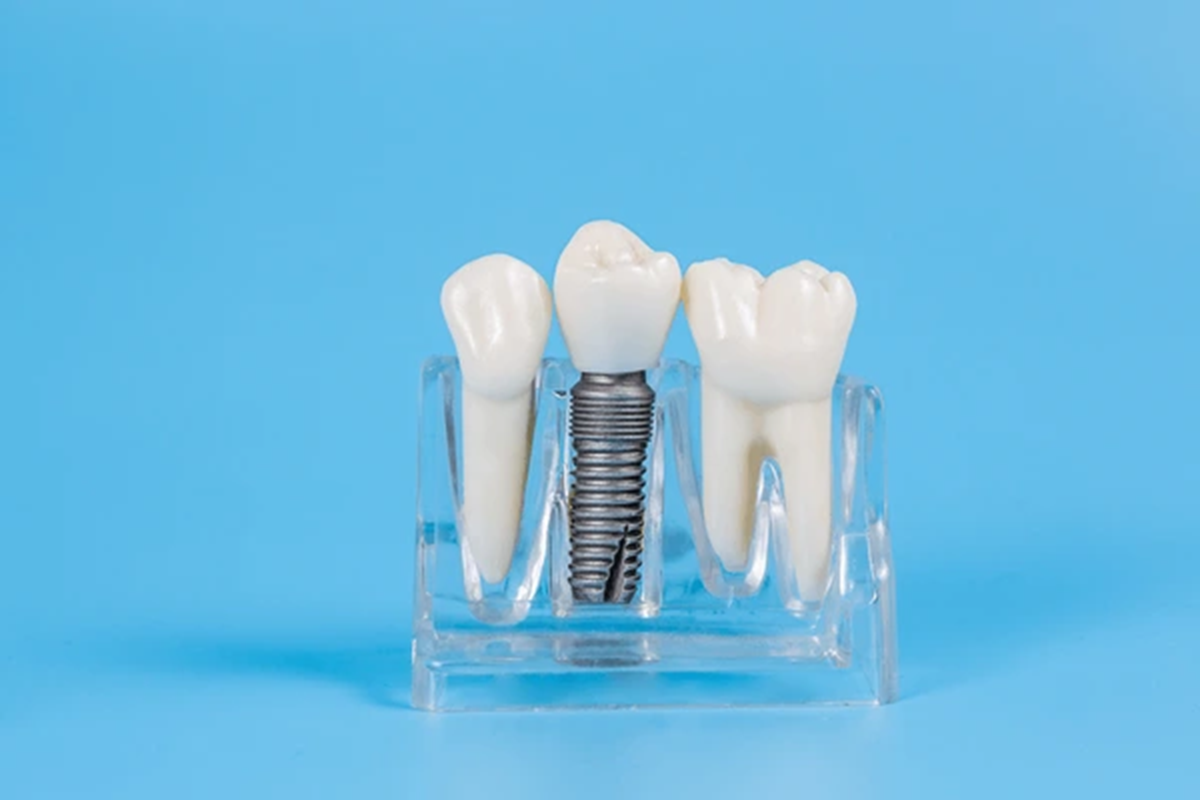
Why These 8 Dental Restorative Materials Are All You Need
Picking dental restorative materials doesn’t need to be daunting. These 8 key options meet all your requirements for routine procedures such as fillings, crowns, and veneers. They offer flexibility, dependability, and are crucial for any dental clinic.
When you concentrate on these materials, you’ll cut inventory expenses and prevent frequent replacements due to their longevity. Patients gain from enduring natural-appearing restorations, which increases their contentment and faithfulness.
Using these dental restorative materials also makes your practice more efficient with these materials also makes your workflow easier—less mess, faster access, and additional time to concentrate on providing high-quality care.
8 Best Type of Dental Restorative Materials You Learn for Your Practice
Deciding on the right materials can be tough. With so many to choose from, it’s hard to know which will give you the best results, be durable, and keep your patients happy. This guide covers the 8 essential dental restorative materials you need in your practice.
1. Resin-Based Composites

Resin-based composites are one of the most versatile dental restorative materials, durable, and aesthetic. They match the natural tooth color, so they are perfect for visible restorations like fillings, veneers, and bonding. They bond directly to the tooth structure for a strong, long-lasting restoration.
Key Features:
- Natural Appearance: Resin-based composites blend in with the natural color of teeth and, therefore, are unnoticeable.
- Strong Adhesion: They directly bond to enamel and dentin, reducing the need for extensive tooth preparation.
- Easy Handling: Composites are available in different viscosities, allowing dentists to choose the right consistency for specific procedures.
- Minimal Shrinkage: Newer composites minimize polymerization shrinkage and preserve the integrity of the restoration.
Technical Specifications:
- Filler Content: Contains 50–85% inorganic fillers normally for strength and wear resistance.
- Curing Method: Most are light-cured, requiring a curing light with wavelengths of 400–500 nm.
- Shades and Opacities: Available in several shades to match teeth and in different opacity levels for layering techniques.
- Price Range: Resin-based composites cost in the range of $50 to $150 per restoration kit, depending on the brand and formulation.
- Maintenance Tips:
- Resin-based composites should be stored in a cool, dark place to maintain their curing properties.
- One should use a protective shield while curing to ensure proper polymerization without overexposure to light.
2. Glass Ionomer Cement (GIC)
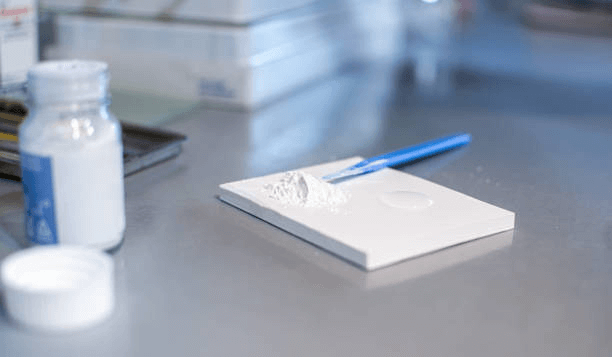
GIC is unique among dental restorative materials for its unique property of fluoride release for the promotion of tooth remineralization and prevention of future decay. Consequently, it has found extensive applications in temporary restorations, pediatric dentistry, and areas less subjected to heavy chewing forces in the tooth structure. For detailed info on products such as Zirconia Material, visit our dedicated section.
GIC chemically bonds to tooth structure and thus provides an effective seal against bacterial leakage. The material is sufficiently biocompatible and released fluoride to be of value in maintaining good oral health, particularly in high-risk patients.
Key Features:
- Fluoride Release: Long-term fluoride release, which helps in the prevention of caries and remineralization.
- Chemical Bonding: Bonds directly to enamel and dentin, improving retention and decreasing the need for adhesives.
- Moisture Tolerance: Performs admirably in moist conditions; hence, it is ideal for subgingival applications.
- Translucency: Modern types have better aesthetics, with light transmission similar to that of the tooth structure.
- Minimal Shrinkage: Sets with minimum dimensional changes, preserving fit and integrity of the restoration.
Technical Specifications:
- Working time: 4-7 min depending on the variety and intended use.
- Compressive strength: 100-220 MPa, adequate in areas of low stress
- Fluoride release: Most release over weeks to months but is formulation-dependent
- Cost range: From basic formulations costing $30 to $80 per pack for more advanced types costing $200
3. Dental Ceramics

Dental ceramics are highly in demand due to the strength and natural aesthetics they give to the patients. Indications of dental ceramics include crowns, veneers, inlays, onlays, and other restorations that closely mimic the appearance of natural teeth in terms of translucency and texture. This makes them an excellent option for restorations visible upon smiling.
Key Features of Dental Ceramics
- Aesthetic Excellence: These dental restorative materials provide exceptional color matching and translucency, blending seamlessly with natural teeth for a lifelike appearance.
- High Durability: Dental ceramics resist fractures and wear, even under the pressure of significant chewing forces.
- Biocompatibility: Non-toxic and safe, they are a great choice for patients with allergies to other dental restorative materials.
- Customizability: Ceramics can be easily shaped and polished to fit individual cases perfectly, ensuring both function and aesthetics.
- Stain Resistance: Unlike some materials, ceramics will not discolor and can retain a natural, aesthetically pleasing look after many uses.
Technical Specifications
- Composition: These dental restorative materials are usually made of porcelain, zirconia, or lithium disilicate, with unique benefits based on the procedure.
- Flexural Strength: 120 to 1,000 MPa depending on the type of ceramic used; this adds to the strength for different needs.
- Opacity Levels: The translucency of this material varies to best meet the requirements of the individual restoration.
- Price range for crowns and veneers: it runs between $800 and $2,500 per tooth.
4. Dental Gold Alloys
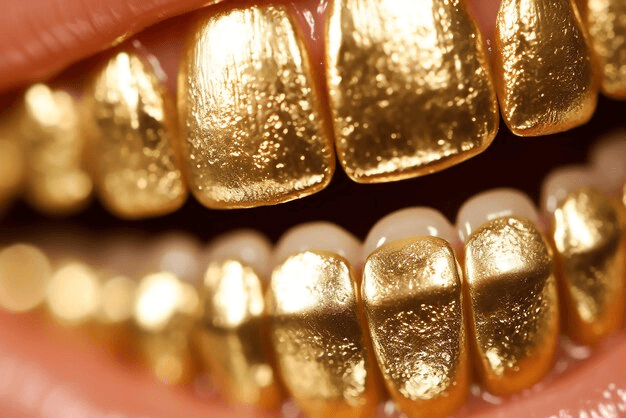
For decades, dental gold alloys have formed the backbone of restorative dentistry. For this reason, dental gold alloy can be said to be among the best dental restorative materials for general dentistry. Because of its incomparable durability, the use of gold alloy is frequently indicated for crowns, inlays, and onlays in areas with heavy chewing forces.
Longevity and biocompatibility make gold alloys very special. They hardly corrode; thus, this material will be reliable for patients needing restorations that should serve them for a lifetime.
Key Features:
- Exceptional Longevity: It can serve for 20 years and even more, provided one takes good care of the restorations. Many other dental restorative materials will not be able to boast of such a record service life.
- Softness and Flexibility: Easily adapted to fit tightly against the tooth for a secure restoration.
- Minimal Wear: Gentle to opposing teeth, thus allowing no unnecessary wear.
Technical Requirements:
- Composition: these dental restorative materials usually contains a mixture of gold, platinum, and palladium, trace elements being silver or copper.
- Hardness: these dental restorative materials are about 200 Vickers Hardness.
- Thickness: these dental restorative materials normally fabricated in the range of 0.5–1.5 mm for optimal strength and comfort.
- Cost Range: Premium gold alloys range from $600–$3,000 per unit, depending on the gold content.
5. Amalgam
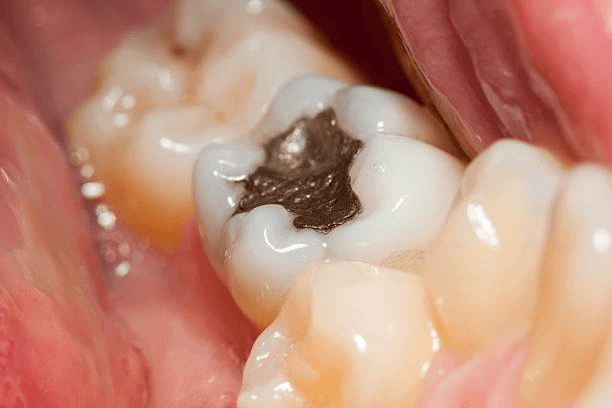
Despite the use of newer materials, amalgam remains one of the most dependable and reasonably priced options within general dentistry. Amalgam is an extremely resistant mixture of mercury, silver, tin, and copper that, for many years, has been part of dental practice. Aesthetically, though it does not bear the pleasing look of modern composites or ceramics, it represents the first choice for many patients who value durability above appearance.
For dentists, amalgam is easy to place and is extremely durable, making it perfect for high-stress areas such as molars. The self-sealing properties reduce microleakage over time to help prevent secondary decay and provide a tight seal.
Amalgam Key Features
- High Strength: Amalgam is manufactured to resist the heavy forces of chewing; thus, it is ideal for posterior restorations.
- Longevity: If cared for, amalgam fillings will survive 10 to 15 years or longer.
- Cost-Effective: Amalgam is less expensive than composite and ceramic in the market and also has low costs associated with its use within a dental practice. Self-sealing properties: the amalgam has slight expansion with time, minimizing gap formation and consequently, bacterial infiltration. Moisture tolerance: works quite well at not-so-perfect moisture conditions, which challenge most other materials. Technical Details Composition: 50/50 mix of mercury and alloy of silver, tin, and copper.
- Compressive Strength: Ranges from 310 to 480 MPa, hence very strong and suitable for high-load areas.
- Corrosion Resistance: Moderately resistant, although it may discolor with time, which does not compromise its function.
- Cost Range: The filling costs can range from $100 up to $300, depending on the location and the expertise of the procedure.
6. Temporary Restorative Materials
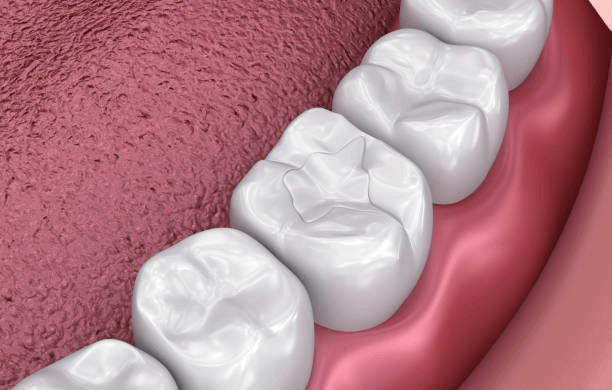
Temporary restorative materials are extremely important in the oral health of a patient pending the placement of permanent restorations. They represent a very important part in general dentistry, the best dental restorative materials that protect prepared teeth, preserving functionality in the interim period.
These temporary materials, used for crowns, fillings, and bridges by dentists, also comfort the patient in question while he waits for the final restoration. It is easy to manipulate, thus making the application fast and quick.
Key Features:
- Usability: Easy to mix and apply; thus, saves time during procedures.
- Short-Term Durability: Can last from weeks to months without compromising the health of the tooth.
- Moisture Resistance: Protects exposed dentin from sensitivity and caries.
- Biocompatibility: Non-toxic to the patient, with very little chance of adverse reactions. Versatility: Can be used in various temporary applications, from restorations to crowns.
Technical Specifications
- Setting Time: From 2 to 5 minutes, depending on formulation.
- Composition: Zinc oxide-eugenol or non-eugenol-based sedative materials.
- Strength: Sufficient to withstand normal chewing forces in short-term applications.
- Cost Range: $20-$100 depending on the material type and brand.
7. Base and Liner Materials

Base and Liner Materials is a dental restorative materials for restorative procedures.Base and liner materials protect the tooth and are thus crucial to the success of permanent restorations. Consider these as the pillow and armor for the teeth, respectively, designed to provide a safeguard against sensitivity and to protect the pulp from injury.
By acting as a barrier between the tooth and the restorative material, these products provide additional absorption for thermal and mechanical stresses. Especially in deep cavities, this is vital to prevent pulp damage in maintaining health and the function of the tooth.
Key Features
- Pulp Protection: Functions as an intermediary to reduce heat changes or chemical irritants affecting the nerve inside the tooth.
- Dual Purpose: Serves as both a base and a liner, depending on the need, and thus versatile for different procedures.
- Radiopacity: It is easily visible on X-rays to help the dentist in follow-up visits of the restoration.
- Easy Application: Smooth and easy to apply; it can be placed quickly and accurately.
- Biocompatibility: Non-irritating to tooth tissues and thus has a minimal chance of causing any inflammation.
Technical Details
- Composition: Calcium hydroxide, zinc oxide, or glass ionomer are the common ingredients used to make it.
- Thickness: Ranges from 0.5 to 2 mm, depending on the procedure.
- Setting Time: Most materials set in 2 to 4 minutes.
- Cost: Generally range between $20 and $50 per unit, depending on brand and formulation.
8. Ceramic Restorative Materials
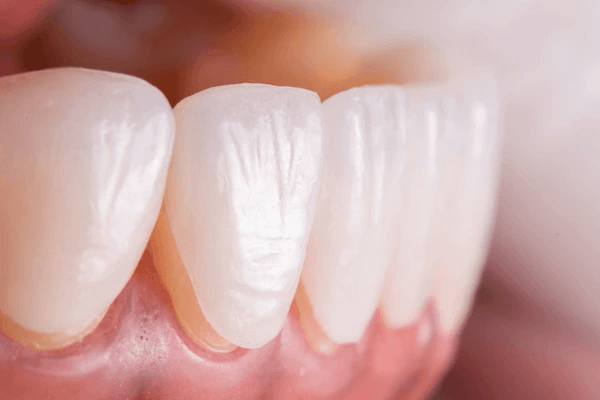
Of all the dental restorative materials in general dentistry, ceramic materials are probably the best, being a combination of exceptional strength combined with excellent aesthetics that gives a lifelike effect. Indicated for crowns, bridges, veneers, and inlays or onlays, the durability is unmatched, along with a very natural appearance. The material of choice for patients with a high demand for closely natural-like restorations.
Key Features:
- Natural Aesthetics: translucent like natural teeth in their appearance, providing an absolutely natural look.
- High Strength: Resists wear and fracture under the chewing forces; hence, it is ideal for both posterior and anterior teeth.
- Biocompatibility: Non-toxic, compatible with the oral environment, and with extremely low allergic potential.
- Resistance to Staining: The surface of the ceramics does not stain easily, hence it always looks nice.
Technical Specifications:
- Material Composition: Normally, zirconia, porcelain, or lithium disilicate is used for value addition in their properties.
- Fracture Toughness: Toughness, for the case of zirconia-based ceramics, stands at 8–10 MPa·m1/2.
- Wear Resistance: Ceramic restorations have wear rates similar to natural enamel.
- Cost Range: From $800 to $3,000 per tooth, depending on the type and complexity.
How to Choose the Best Dental Restorative Materials for Your Practice
The selection of dental restorative materials is a very important decision in the delivery of quality treatment and ensuring patient satisfaction.
- Know your patient’s needs. Aesthetic concerns often lead younger patients to desire resin-based composites, while older patients may require stronger options such as zirconia or amalgam. High-risk patients may benefit from glass ionomer cement and other fluoride-releasing materials. Ceramics and other tooth-colored restoratives will blend in naturally for the appearance-conscious patient. Budgeting is also crucial; discuss costs and provide options that balance cost versus quality.
- Adapt the material to the type of dental restorative materials restoration.Ceramics or resin composites provide excellent aesthetics for anterior teeth. Glass ionomer cement is used for temporary restorations, while zirconia or amalgam can be used in restorations that are subjected to chewing forces.
- Balance durability with aesthetics. Composites and ceramics are much like natural teeth, while zirconia and amalgam bear the stress well.
- Assess the quality of the material on its biocompatibility, fluoride release, and resistance to wear. Ensure that there is adequate stock and compare prices without compromising the quality.
For reliable and durable supplies, deal with renowned companies like Aidite. With these processes, you can enhance the quality of service, productivity, and create a profitable practice.
FAQs About Dental Restorative Materials
Which dental restorative material is best for fillings?
Resin-based composites are usually the dental restorative material of choice for fillings, especially in visible areas. They naturally blend with the color of the tooth, making it unnoticeable. Composites are also durable and bond directly to the tooth, ensuring a long-lasting solution.
How do I choose the right dental restorative material for my patients?
The choice of dental restorative material depends on factors such as the location of the restoration, the patient’s aesthetic preferences, and durability needs. In the case of front teeth, resin composites or ceramics are better for aesthetics. For molars that endure heavy chewing, metals or hybrid materials may be more suitable.
Are there dental materials that release fluoride?
Yes, GICs release fluoride, which aids in the re-mineralization of teeth and prevents further decay. GIC is particularly ideal for those patients who have a high risk of caries. Aidite does not manufacture restorative dental materials, but it does have sophisticated dental equipment to help you be more efficient in your dental procedures and keep your patients smiling.
How long do dental restorations last?
The lifespan of a dental restoration varies by material. Composite fillings made of dental restorative materials usually last 5–10 years, and ceramic restorations may last 10–15 years or even longer if taken good care of. Their success is highly influenced by oral hygiene and dietary habits.
Summary
Choosing the right dental restorative materials is essential for delivering durable, high-quality results in general dentistry. Materials like resin-based composites, ceramics, and glass ionomer cement each offer unique benefits for different procedures, helping dentists meet patient needs effectively.
This guide highlighted key factors for selecting dental restorative material based on performance, cost, and versatility. For dependable options, Aidite stands out with its innovative, high-quality products trusted by professionals worldwide.




